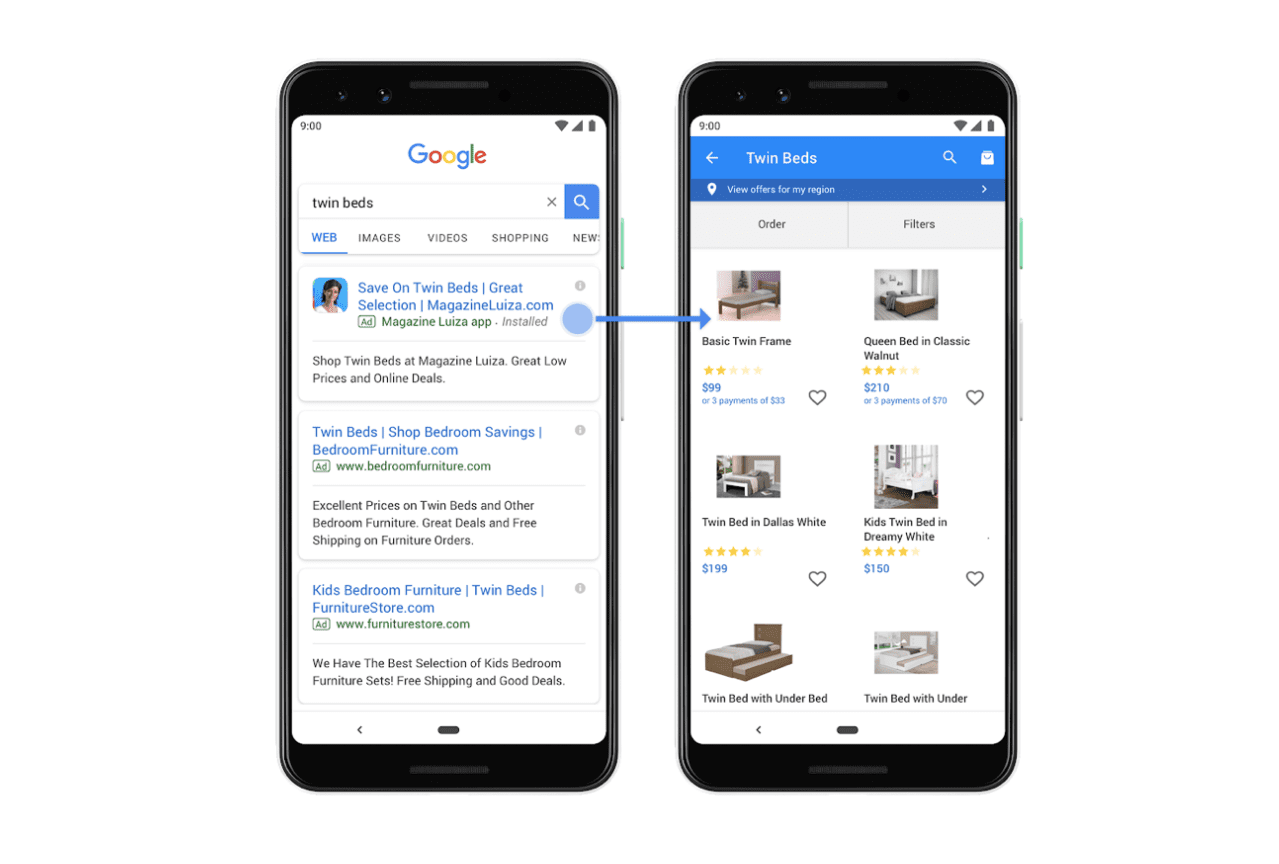Over the next few years, mobile will drive nearly 90 percent of U.S. digital ad spend, according to Forrester. Businesses such as our client Snapfish are using mobile to achieve benefits such as a 343 percent increase in revenue from mobile app installs and a 756 percent return on ad spend. On May 14, Google made some major moves to accelerate our march toward a mobile advertising future:
App Deep Linking from Mobile Ads
Google announced that in coming weeks, Google will enable app deep linking from Google ads. Business that offers apps and also advertise on mobile will benefit from a more frictionless experience. Google will take users from shopping, display, and search ads right to the relevant page on your mobile app. Users with your app installed will complete a desired action (such as buying a product or booking a hotel stay) in a more personal and easier way with their check-out information pre-populated. As Google noted on its blog, “Early tests have been promising—on average, deep linked ad experiences drove 2X the conversion rates.”
In announcing app deep linking, Google shared the example of Magalu, one of Brazil’s largest retail companies. Magalu, seeing that its app was growing in popularity, enabled deep linking. According to Google, “By enabling deep linking, loyal customers who tapped on a Magalu ad were taken directly to the mobile app they already have installed, resulting in more than 40 percent growth in overall mobile purchases.”
Gallery Ads
Google also announced the launch of Gallery Ads later in 2019. Gallery Ads consist of swipeable images that will display on multiple pages on a user’s mobile phones. As Google announced,
By combining search intent with a more interactive visual format, gallery ads make it easier for you to communicate what your brand has to offer. We’ve found that, on average, ad groups including one or more gallery ad have up to 25 percent more interactions—paid clicks or swipes—at the absolute top of the mobile Search results page.
Advertisers will be able to feature up to eight images. As Search Engine Land (SEL) pointed out, one of the distinguishing features is the large carousel of swipeable images available. Per SEL, people can swipe through the images or click one to expand the gallery into a vertical view that users can then swipe down. At the end of the gallery, a call to action to visit the advertiser’s site appears.
Advertisers get charged for Gallery Ad interactions in one of two ways:
- A cost-per-click basis when a user clicks on the headline to go to the advertiser’s website.
- After the user swipes through three images in the gallery.
There is no word yet on an exact date when the format will appear. Advertisers can prepare now by experimenting with different ad, headline, and text options that optimize the available digital real estate.
What Advertisers Should Do
These developments have some important implications:
- If you rely on an app to attract and service customers, creating ad experiences that link to your app is no longer ideal but is essential. As we’ve shared in our own client work, by varying ad formats wisely to account for factors such as seasonality, advertisers can make advertising and e-commerce more tightly integrated than ever.
- Advertising on mobile is evolving to allow for more sophisticated storytelling. With a Gallery Ad, you can use multiple images to reveal new products with a series of images rather than collapsing the entire ad and offer into one image. In particular, the swipeable format makes it easier for customers to explore your products, which is especially useful for high-consideration products.
Now is the time to test and learn with Google’s new ad formats and tools. At True Interactive, we possess extensive experience helping businesses launch successful advertising online, including the use of Google products. Contact us. We are here to help.
